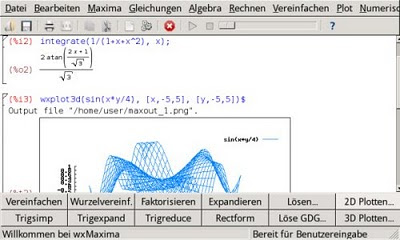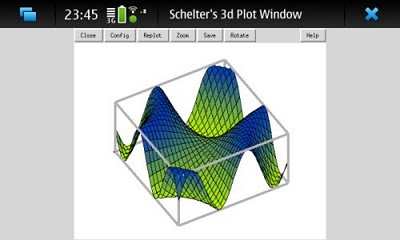Taking a bit of a break from the
many Ubuntu derivatives I have been playing with of the late, I came across
Chakra Linux 0.2.1 on
distrowatch's feed late last week. The Chakra project started off as a derivative of
Arch Linux. It was a modular KDE Live CD with some extra
tool sets to make setting up and using Arch Linux less of a hassle.

Notice the careful usage of the word
was in my last sentence. The current alpha build you can download of Chakra is in a transitional phase between being simply an Arch Linux tool set and becoming it's own full fledged distro. I'll discuss what exactly this means in a few moments, for now lets take a look at using the LiveCD and installing the operating system.
Chakra currently comes in LiveCD format that is a
free 725~ meg download. After I ripped the image to a CD and restarted my computer the Chakra disc loaded right up. I must say for an Alpha release I was very impressed with how much polish the start up already contained. Before the system actually boots you are presented with two different primary boot options:
- Boot with all Free Drivers
- Boot with non-Free Drivers
My system contains an nVidia graphics chip, so selecting "non-Free Drivers" caused the Live CD to install the closed source nVidia drivers automatically - this is something I personally like - if you are a
FOSS Extremist selecting "all Free Drivers" will use the nv driver for an nVidia graphics card (both of which auto detected and configured my monitor resolution to it's correct 1680x1050).
When the system finally boots up you are presented with a fairly standard KDE 4.x desktop:

If you look closely at the above screen shot you will notice two files containing some very useful information. The first is a
packages files that contains a list of all the packages preinstalled on the live system, as well as their version numbers. The second is a
Passwords.txt that lists the default password for the live user and the root account on the live disc.
The Chakra installer has got to be the best looking Linux installer I have ever used:

I think my favorite part about it is the sleek looking globe you choose your time zone from:

The installer worked flawlessly for me, however I had already partitioned off space for Chakra when I installed another distro. I mention this because another reviewer
said he had issues with the disk setup part of the installer. After the install finished I rebooted my system so I could stop using the LiveCD and start installing things. When my system came back online I was happy to see that the nVidia drivers had also been installed during the installation and my KWin desktop effects where working like a charm.
The default software selection Chakra ships with is kinda sad, no music player, no torrent client, no screen shot program, no image viewer and no office make very slim pickings. If you head to the CLI (pacman currently) or CInstall (GUI interface for Pacman) to try and resolve this issue you will notice that many of your common Linux packages are nowhere to be found. This is because as I said before, Chakra is in a transitional phase. Have no fear though! Just a download away, hosted on the Chakra homepage, are
piles of "click n run" installers. The "click n run" installers work fantastically and once they are integrated into Chakra's package management system I think they will rival even
DPKG. After you download a "click n run" installer, which will be either .cb or .tar.xz extension, you simply double click on the file and it will ask for your password before installing the package and any dependencies it may require. I installed both Firefox and OpenOffice in this manner and they worked with zero issues.
I only have a few small complaints about this current release of Chakra and I am sure they will be resolved long before the distro reaches a 1.0 release. The first is that even though my system does not contain bluetooth capabilities, the KDE bluetooth widget was loaded. The second is that as with most KDE distros, the built in network manager worked very poorly (even though it is the new plasma widget). My third and final issue, is that even though the nVidia drivers installed the nvidia-settings package automatically, this package requires GTK to function. Meaning it failed to load until I installed the gtk2 package via pacman.
Even though Chakra is a very young distribution, it has quickly become my favorite non-Ubuntu based distro. I think we will see some great things from the Chakra team before a 1.0 release of the distribution. This is definitely one worth trying if you are looking for a new distro the play around with.
~Jeff Hoogland





















